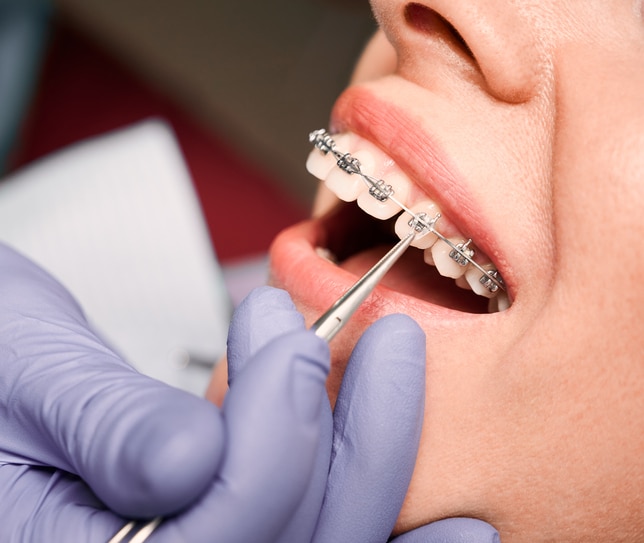Your Overview to Cumming Invisalign: Straightening Teeth with Style and Convenience
Your Overview to Cumming Invisalign: Straightening Teeth with Style and Convenience
Blog Article
Comprehensive Guide to Orthodontics Procedures for Correcting Oral Imbalances
Recognizing the complexities of each treatment, including their mechanisms, advantages, and potential disadvantages, is essential in making educated decisions regarding one's orthodontic therapy. As we navigate via the comprehensive guide to orthodontic treatments for fixing oral imbalances, the elaborate information of each method will unravel, shedding light on the path towards a useful and harmonious dental placement.
Orthodontic Procedures Overview

In enhancement to clear aligners and traditional braces, orthodontists may also recommend other interventions like headgear, palatal expanders, or retainers to address particular positioning issues (braces). These procedures are tailored to each patient's unique needs and may entail a mix of therapies to accomplish the preferred results. Regular adjustments and surveillance are crucial parts of orthodontic therapy to make certain progression gets on track and to make any type of required adjustments along the road. By undergoing orthodontic treatments, people can not just accomplish a straighter smile but additionally boost their total oral health and function.
Typical Braces: How They Function
When thinking about orthodontic therapies for oral misalignments, conventional dental braces stand out as a tried and true approach for dealing with teeth positioning. Conventional dental braces are composed of brackets, wires, and bands that collaborate to apply continuous stress on the teeth, slowly relocating them right into the preferred placement. The brackets are connected to the teeth making use of a special adhesive, and the wires are threaded via the brackets. By adjusting the tension of the wires, orthodontists can control the direction and force put on each tooth, guiding them into proper alignment in time.
As pressure is applied to the teeth via the braces, the bone surrounding the teeth is improved to support the new tooth placements. People will certainly require routine adjustments at the orthodontist's office to make sure the braces proceed to use the appropriate pressure for efficient teeth movement.
Invisible Aligners: Advantages And Disadvantages
These clear, custom-made trays are essentially unseen when worn, making them an attractive option for people looking for an extra aesthetically pleasing orthodontic treatment. Clients can eliminate the aligners before consuming or cleaning their teeth, decreasing the danger of food getting stuck in the home appliance and streamlining the cleansing procedure.

Surgical Orthodontic Options
Surgical treatments in orthodontics existing feasible why not look here alternatives for addressing intricate dental imbalances that may not be properly solved through standard orthodontic therapies. While conventional dental braces and undetectable aligners can remedy many orthodontic issues, certain situations call for surgical treatment to achieve ideal outcomes. Surgical orthodontic options are generally suggested for severe malocclusions, considerable jaw inconsistencies, and instances where the underlying bone structure needs modification to accomplish correct placement.
One common surgical orthodontic treatment is orthognathic surgical treatment, which involves repositioning the jaws to deal with functional issues such as problem eating or talking. This surgical procedure is frequently done in cooperation with an orthodontist who helps line up the teeth prior to and after the treatment. Surgical orthodontics might also involve procedures to subject affected teeth, eliminate excess periodontal cells, or improve the jawbone dentist office to develop a much more unified face account.
Prior to taking into consideration medical orthodontic alternatives, people undergo a thorough evaluation to identify the requirement and potential benefits of such treatments. orthodontics. While surgical procedure might appear daunting, it can significantly improve both the feature and aesthetics of the smile in cases where standard orthodontic therapies fail
Retainers and Post-Treatment Care

Failing to comply with post-treatment care instructions can result in regression, where the teeth gradually move back towards their original settings. Consistent retainer wear, great dental health, and normal dental exams are necessary for maintaining the outcomes achieved with orthodontic surgery and ensuring the lasting stability of the remedied oral alignment.
Final Thought
In conclusion, orthodontic treatments offer different alternatives for correcting dental imbalances. Traditional braces utilize steel brackets and wires to move teeth right into proper placement. Invisible aligners supply an even more very discreet alternative however might not appropriate for all cases. Surgical orthodontic options are offered for extra severe misalignments. Retainers are typically utilized post-treatment to preserve the brand-new placement. Overall, orthodontic procedures can properly improve dental health and wellness and visual look.
As we browse via the thorough guide to orthodontic treatments for dealing with dental misalignments, the intricate details of each method will unfold, shedding light on the path towards a unified and practical dental placement. - aligners
One of the most common orthodontic treatments is the usage of dental braces, which consist of metal braces and cables that apply gentle pressure to progressively change teeth into the desired placement.When thinking about orthodontic treatments for dental imbalances, typical dental braces stand out as a tried and true technique for fixing teeth placing. In addition, undetectable aligners may not be suitable for intricate orthodontic problems that require even more considerable teeth movement, as they are commonly suggested for mild to modest cases. Retainers are customized orthodontic gadgets designed to hold teeth in their dealt with positions after the conclusion of orthodontic treatment.
Report this page